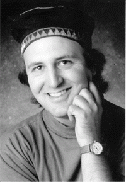I have seen several comments and discussions stemming from the notion of a conceptual poetry that begin with references to conceptual art. Previous to the Conceptual Poetry and Its Others symposium, I also wondered if the work of conceptual artists, particularly the privileging in much of their work of language and idea and statements about art and art context, over visual works, would be some kind of model for conceptual poetry. Now I would say that, nearly unequivocally, “no.” The symposium practically made no mention of conceptual artists, with the principal exception of the artist who is perhaps the largest, and possibly the first, influence on both conceptual art and conceptual poetry: Marcel Duchamp. Even in Duchamp, the emphasis was not so much on his appropriation of real-world objects, such as the readymades, but on his careful selection and presentation of such objects. It was repeatedly pointed out that not everything works as a readymade, and that selection, framing, and context, all of which are generally created by the artist, are essential. It’s not just any urinal, and it’s not just presented in any way. It’s presented sideways, hung at a particular height, and implies specific kinds of relationships to the viewer.
The definition of conceptual poetry, or at least of part of what may be considered as conceptual poetry, specifically stressed that all or part of the work is something other than what the poet creates anew. Thus a significant part of the meaning or context of the work has to do with the choice the poet makes of what to work with, and how to frame the work. The range may be from total appropriation, such as Kenneth Goldsmith’s re-presentation of one day of the New York Times, to a use of outside work for structural purposes, such as Cole Swensen’s call for an ekphrasis that was not in any sense a poetry about the “subject” of works of art to which the poetry refers or depends on, rather is aligned in one way or another with structural or patterning aspects of the work of art, such as an echoing, in language (and possibly in very creative ways) of an art work’s rhythm of shape, or rhythm of color, or rhythm of tone. Within this range of conceptual poetry one might find works created from procedures enacted on source texts, various forms of collage and quotation using work that is not created anew by the poet, and all sorts of other works. And when appropriation, collage, or quotation is a marker of the conceptual nature of the work, it is by no means necessary that the work is made entirely of things found “outside,” though of course this is one possibility.
Among writers invoked, it was noted that Walter Benjamin’s Arcades is a work made almost wholly of writing by others. Benjamin’s work becomes an archive or collection that one may read partially, beginning anywhere, moving in a nonlinear manner. In many conceptual works, the possible readings proposed may be other than beginning-to-end and reading-every-word. Goldsmith described his own work as meant for short attention spans, and as rewarding skimming rather than a complete reading. In fact, he recommends skimming as the appropriate reading practice for his work. Charles Bernstein mentioned that much of the work of Robin Blaser is composed of quotations from others, and should be considered within this broad range of what is being proposed as conceptual poetry. Yet clearly Blaser’s work is meant to be read in a very different way than Goldsmith’s. One memorable comment from Goldsmith’s talk was when he remembered a student who had an assignment (not from his class) to write something in the style of Kerouac. Goldsmith thought the student would likely have learned at least as much, and possibly more, by just re-typing a work by Kerouac. Careful and accurate retyping of every letter and space and punctuation mark, that is, and not simply cutting and pasting.
Once again, all of this points to the fact that no one at the symposium was proposing limits, so much as methods (new & not so new) of writing and reading poetry.
In one panel Laynie Browne pointed out that the online ubuweb anthology of conceptual poetry includes 2 works by women in its 30-plus total of works. I am glad she brought that up, and I find the omission there worthy of comment. But I also believe that the creators of that anthology were beginning to sketch out their ideas for conceptual poetry among works they already knew well, and perhaps (but I’m not sure about this) from works already present on the ubuweb site. We are told that a more inclusive and comprehensive print anthology is in the works. Also, perhaps Laynie was pointed to this web anthology and its introduction, as I was, prior to the symposium, in order to get an idea of what was being proposed in the symposium. That is, as “respondents” (we were two of about 10 such “respondents”), when wondering what we were responding to, we were told that we might look at that anthology. I now know that such direction should probably not have been given, as it was misleading, or I at least took it the wrong way. That ubuweb anthology was in no way the basis for the symposium, though it may have been one among many of the sparks that led organizers to create the symposium. From the first moments of the symposium, though, it was clear that we were at the symposium to think about conceptual poetry in any ways that seemed appropriate, and there was no particular previous statement or work on which this symposium depended or to which it was responding.
One more note: there is an excellent profile of Caroline Bergvall, one of my favorite presenters at the symposium, that was created just before the symposium began by Lisa Bowden of Kore Press. It can be found on the
Kore Press "appreciations" page.

